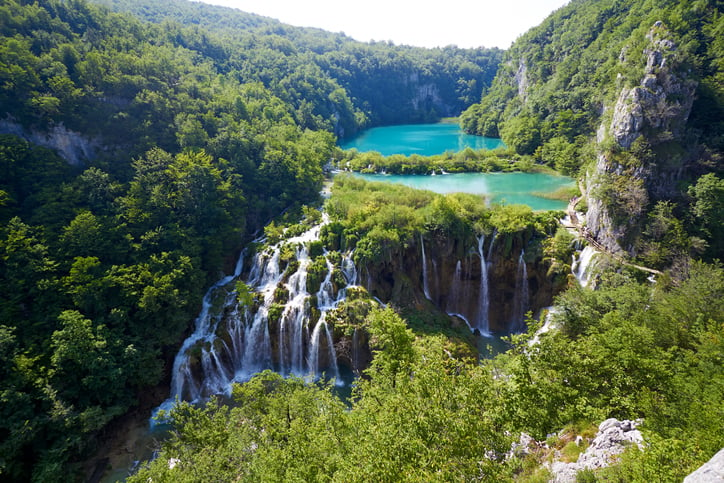
The Plitviče Lakes National Park is one of the oldest and largest national parks in Croatia. First thing's first - it's pronunced plit-vitz-eh. We know, it's a tricky one.
Now, Plitviče is one of those places that makes the country seem like a proper untouched paradise. Beautiful waterfalls pour over lush greenery. Turquoise water winds through mountains, which roll as far as the eye can see. Mountain wagtails and white-backed woodpeckers break the silence of morning by singing old Croatian folk songs (probably). Sounds alright, right? Wrong. It sounds better than alright. Plitviče Lakes National Park is absolutely spectacular.
It’s for that reason, and many more, that the Plitviče Lakes National Park has been a UNESCO World Heritage Site since 1979. So there. That’s the absolute basics.

Now we’re going to get into a few more of the specifics regarding Plitviče and the Plitviče Lakes National Park. Like explaining why one reason you should be excited to go is to get a good few slaps when you get there! ‘Slap’ is the Croatian for waterfall, by the way, just to avoid any early confusion. Please don’t slap anyone in the National Park. Or anywhere else. You can’t just go about slapping people. Now back to Plitviče.
Where is the Plitviče Lakes National Park?
The Plitviče Lakes National Park is in the centre of the Croatia. It’s part of the mountainous karst area which borders the eastern boundaries of Bosnia and Herzegovina (a country which is also super beautiful). It measures in at 296.85 square kilometres and, as the crow flies, it’s 34 miles away from the Adriatic Sea at its nearest point. There’s a map right above this paragraph though, so if you want to know exactly where it is, we don’t know what you’re doing reading this.
That’s all very well, but how do I pronounce ‘Plitviče’?
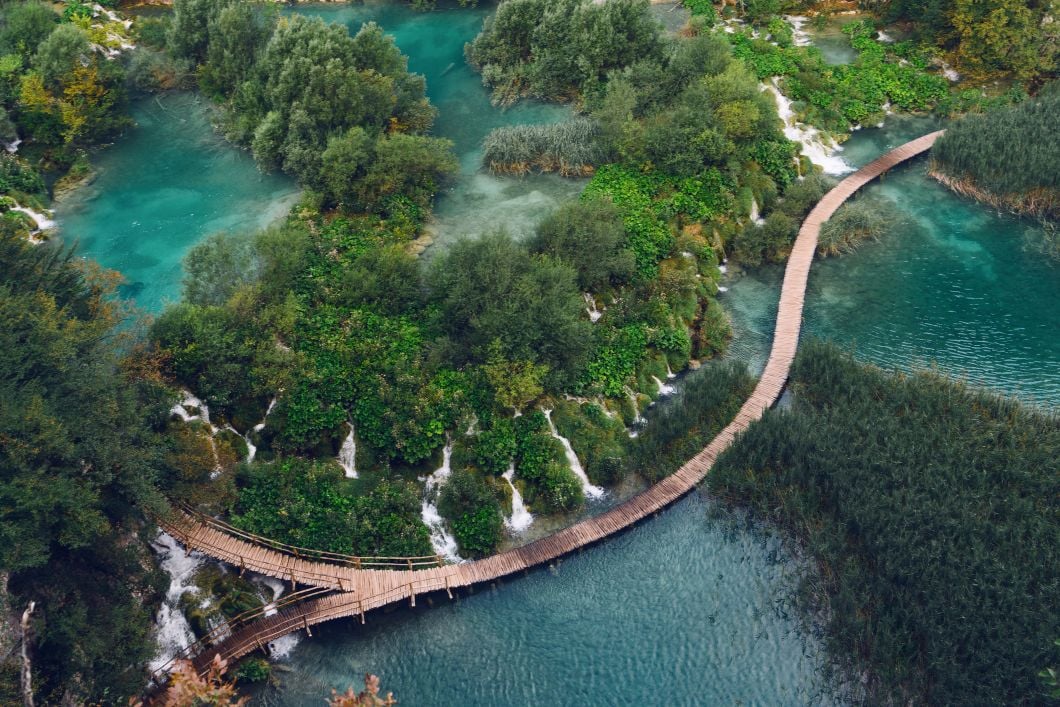
Now you’re asking the right questions. We like travellers who put in the effort to learn how to actually pronounce a place name properly. It’s meant to be pronounced as “pleet-veet-sa” in this case. We’d cover the ‘lakes national park’ bit too, but we reckon that’s pretty self-explanatory.
Nice. So how do I get to Pleet-Veet-Sa?
Wow! Look at you go. You’re an everyday Croat already. Next you’ll be eating skripavac cheese, sipping beautiful wines and winning the Ballon d’Or. There are various ways to get to Plitviče Lakes National Park. The nearest airports are Zadar, Zagreb and Rijeka. On the map, the national park is about halfway between Zagreb, the capital of Croatia, and Zadar, which is on the Dalmatian Coast. So going from either of these cities, even on a day trip, is doable. From Zagreb or Zadar it’s about a 2-3 hour bus depending on traffic. From Split, it’s a bit further at 3-4 hours, and if you’re coming from Dubrovnik you’re looking at 4-6 hours.
Okay. I know how to say Plitviče and I know how to get there. Why should I go?
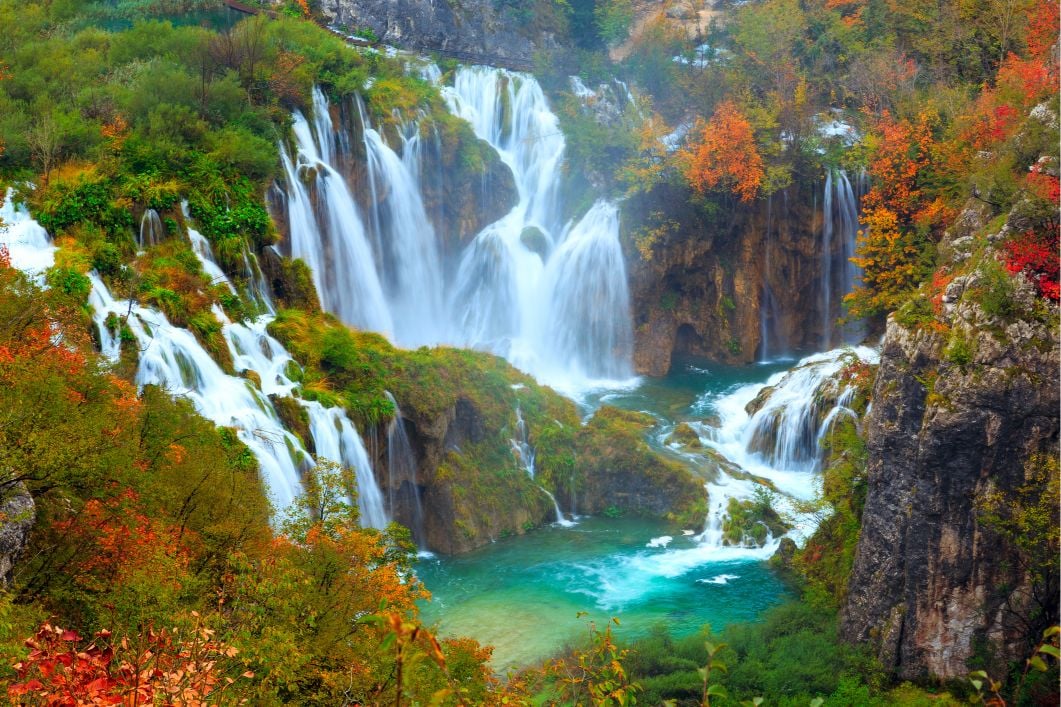
Well, you should go because we can guarantee you a good slap if you do! That’s our way of testing whether you read the introduction to this piece or not. If you didn’t, you’re probably very confused right now. A ‘slap’ is the Croatian word for a waterfall – and Plitviče Lakes National Park is famous for its waterfalls. Its waterfalls that have made it the most popular tourist attraction in Croatia, and the best thing to do when you get there is just… to explore. It’s stunning.
The focal point of the Plitviče Lakes National Park really lies in the name. It’s based around 16 lakes stretching eight kilometres in total. The lakes are connected to one another by any number of waterfalls and deep set in lush green forest which is home to everything from wild boars to bears and wolves. Don’t leave your porridge unattended and the bears shouldn’t be a problem.
There’s a lot of hiking potential in the area. The lowest point is 380 metres, whereas the summit is way up at 1280m. The height difference between the lakes themselves is only 135 metres though, so a lot of the best or most popular hiking routes focus on areas around this level. Perhaps the best viewpoint of the lake, and certainly the most famous, is that from Veliki Slap. It’ll probably be the picture on your entry ticket, or if you get confused, just stick ‘Veliki Slap’ into your phone. Remember that photograph from the very top of this article? We’ve been on such a journey since then, I know! But yup, that was taken from Veliki Slap, or nearby.
Okay, so what’s the downside?
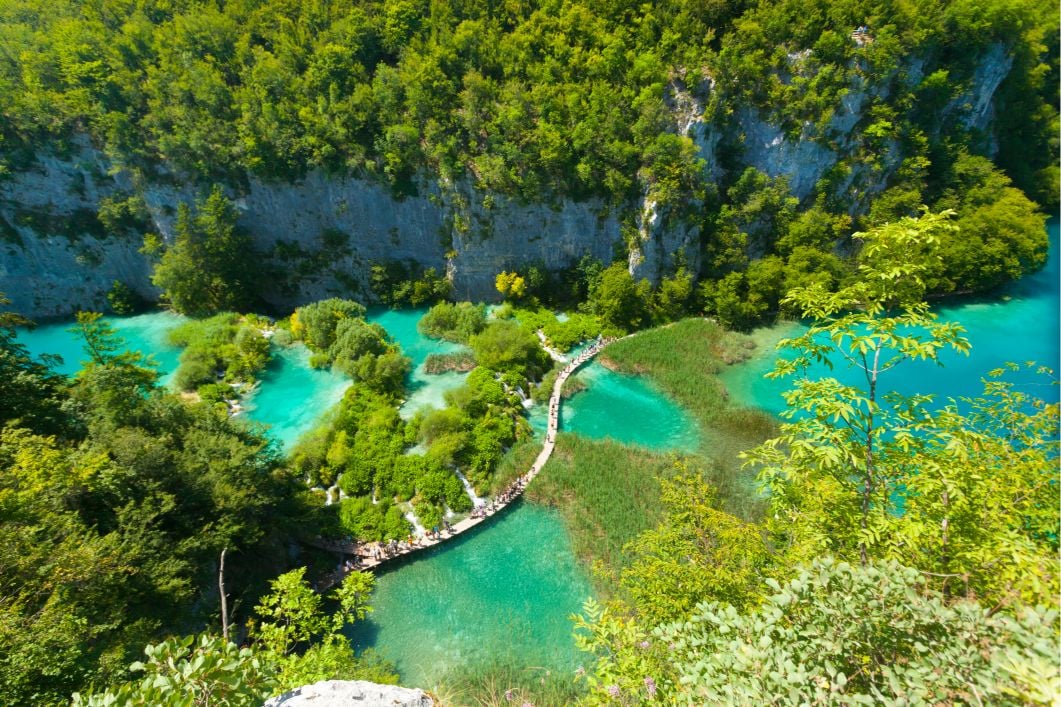
See those little ants on that bridge above? Yup. The detectives among you will already have worked this one out. When we wrote that the Plitviče Lakes National Park is “most popular tourist attraction in Croatia”, that’s not necessarily a good thing. Especially if you’ve been to Dubrovnik, you’ll know all about overtourism in Croatia, and particularly in summer, this is a bit of an issue in the Plitviče Lakes National Park. That Veliki Slap lookout spot we mentioned above? That’ll be super crowded in June, July and August. Summer can get crazy busy.
Another potential downside, depending on your outlook, is that swimming in Plitviče Lakes National Park is strictly forbidden. That can be a bit of a nuisance when you’re staring at postcard-perfect lakes in 30 degrees of heat. Swimming has been banned since 2006. Before then, swimming had been allowed in Lake Kozjak. Long story short, it’s because of water contamination.
There’s also an entry fee to access the Plitviče Lakes National Park. It differs depending on how many days you’re staying. The absolute peak price is 250 HRK for an adult (approx £28.50) for one day. There are also various concession prices, though, and the use of the ferries and trains within the park are included in the price of your ticket.
Finally, it can get a bit crowded at the entry point. There are two entrances to Plitviče Lakes National Park. The second entrance, near the upper lakes, is nearly always less crowded.
We stopped listening at “busy in summer”. Worth a Plitviče trip in Winter or Spring?
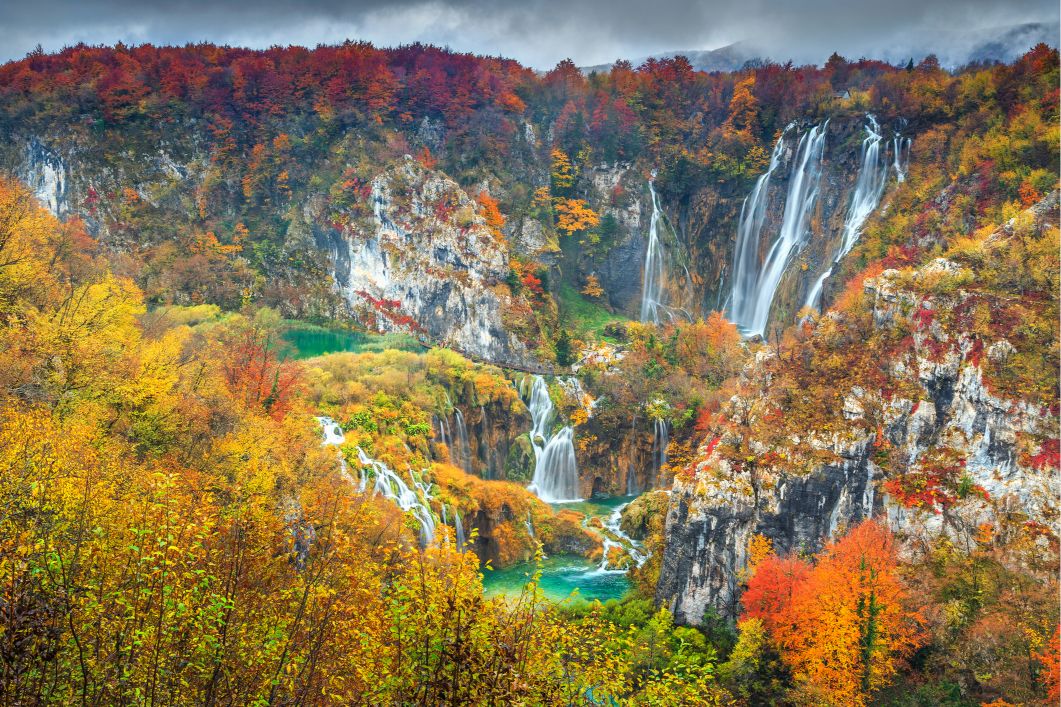
Absolutely! We’d go as far as recommending it. Sure, in summer you get the beauty of the greenery and turquoise water, but you also get those crowds we mentioned. In winter the place is arguably even more beautiful, covered in snow with the lakes frozen over. In late summer and early Spring, the natural beauty remains, while the crowds are much more manageable, and in Autumn… well, have you seen the picture about two centimetres above this text? Seriously. Look at that. Just look at that. To quote the cult 2001 hit ‘All Rise’ by the now disbanded boyband Blue, “I rest my case”.
Awesome. Thanks. Anything else?
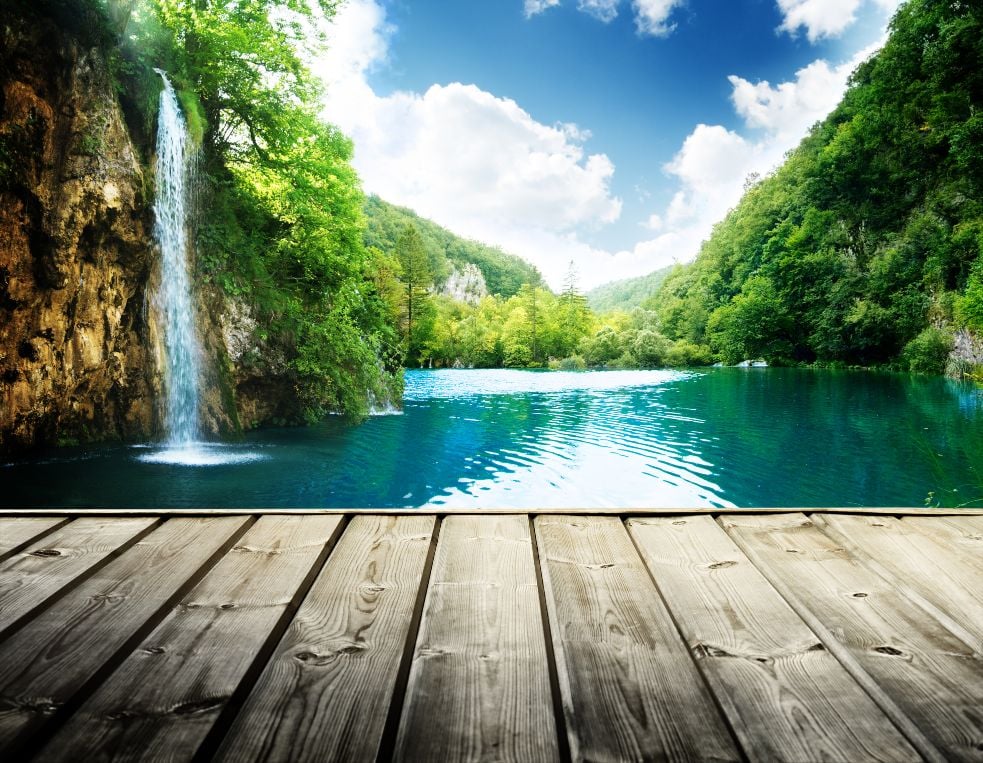
No problem. That’s why we’re here. All that’s left to say is go enjoy yourself. And if you’re looking for any adventures elsewhere in Croatia, check out our tailor-made selection. It’s been built specifically for people who like to avoid the crowds and have a proper experience. We’ve got everything from night-time SUP on the Adriatic Sea to kayaking and wild camping.
Check out the full range of wild adventures in Croatia at this very link!


